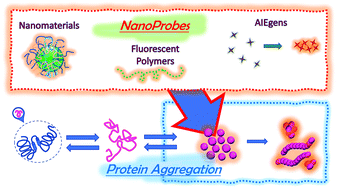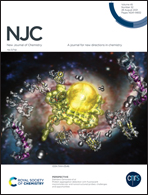Protein aggregation detection with fluorescent macromolecular and nanostructured probes: challenges and opportunities
Abstract
Protein aggregation is a phenomenon widespread in all organisms, that responds to a variety of external stimuli and is involved in complex functions such as storage and recycling of protein residues in crowded environments. In some cases, aggregation of proteins is related to serious human diseases. Understanding, monitoring and, eventually, intervening in the process of aggregation – in particular at its early stage – is a topic of high relevance and urgency. Recently, nanostructured materials have allowed for an unmet versatility and modularity in the field of sensing and inhibition of aggregation. Fluorescent oligomers and polymers, via controlled tuning of chemical functionalities, are yielding detailed comprehension of the interactions between probe candidates and protein aggregates; AIEgens are rapidly addressing many open challenges on sensitivity and signal enhancement; nanomaterials are increasingly serving as theranostic platforms, with multiple functionalities stemming from the assembly of components with complementary abilities. Here we review the most recent achievements in protein aggregation sensing based on macromolecular or nanostructured probes, highlighting the general experimental and computational findings that may serve as guidelines for the next generation of theranostic probes.

- This article is part of the themed collections: 2021 Focus and Perspective articles and NJC Emerging Investigators


 Please wait while we load your content...
Please wait while we load your content...